Sensor Sweep: Unearthed Arcana, Weird Tales Story, Robert Bloch, They Thirst
Monday , 10, April 2023 Sensor Sweep 1 CommentFiction (Sprague de Camp Fan): The Weird Tales Story by Robert Weinberg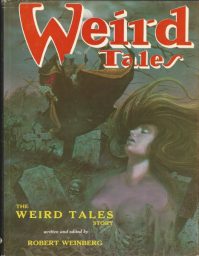 has seen three different editions. The first was published by Fax Collector’s Editions in 1977. This was a nice hardcover book with interior art by Alex Nino. The book is dedicated: To Margaret Brundage, whose covers might not have reflected the contents of Weird Tales but surely sold a lot of copies.
has seen three different editions. The first was published by Fax Collector’s Editions in 1977. This was a nice hardcover book with interior art by Alex Nino. The book is dedicated: To Margaret Brundage, whose covers might not have reflected the contents of Weird Tales but surely sold a lot of copies.
 Weapons (Spec Ops Magazine): The Talley Defense Systems M72 LAW (Light Anti-armor Weapon System) is a disposable, single-shot anti-tank rocket weapon developed by the US Army in the late 1950s. This weapon is lightweight, easy to use, and intended to be issued to as many soldiers as necessary.
Weapons (Spec Ops Magazine): The Talley Defense Systems M72 LAW (Light Anti-armor Weapon System) is a disposable, single-shot anti-tank rocket weapon developed by the US Army in the late 1950s. This weapon is lightweight, easy to use, and intended to be issued to as many soldiers as necessary.
Robert E. Howard (Paperback Warrior): Along with “The Tower of the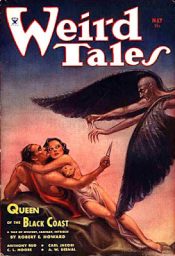 Elephant” and “The Frost-Giant’s Daughter”, “Queen of the Black Coast” is one of the most praised Robert E. Howard stories starring Conan the Cimmerian. It was originally published in Weird Tales in May, 1934. The story was reprinted in Avon Fantasy Reader #8 in November 1948. It was collected in The Coming of Conan (Gnome Press, 1953), Conan of Cimmeria (Lancer, 1969), The Conan Chronicles Volume 1: The People of the Black Circle (Gollancz, 2000) and later as comic book adaptations by both Marvel and Dark Horse.
Elephant” and “The Frost-Giant’s Daughter”, “Queen of the Black Coast” is one of the most praised Robert E. Howard stories starring Conan the Cimmerian. It was originally published in Weird Tales in May, 1934. The story was reprinted in Avon Fantasy Reader #8 in November 1948. It was collected in The Coming of Conan (Gnome Press, 1953), Conan of Cimmeria (Lancer, 1969), The Conan Chronicles Volume 1: The People of the Black Circle (Gollancz, 2000) and later as comic book adaptations by both Marvel and Dark Horse.
Fiction (Grognardia): If the May 1934 issue of Weird Tales looks familiar, it should. That’s because it may well be one of the most famous in the entire run of the Unique Magazine: the first cover appearance by Robert E. Howard’s Conan the Cimmerian, courtesy of Margaret Brundage. Of course, the issue in question featured more than “Queen of the Black Coast,” justly famous though that tale is. Also to be found in its pages is Clark Ashton Smith’s “The Tomb-Spawn,” a short but nevertheless satisfying story set in Zothique.
Edgar Rice Burroughs (Paperback Warrior): In the same year that he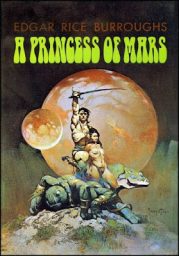 created and authored Tarzan of the Apes, Edgar Rice Burroughs also introduced readers to John Carter of Mars, an equally adored and respected character that would surface in the author’s bibliography from 1912 through 1941. The first appearance of Carter is in A Princess of Mars, originally published in All-Story Magazine from February through July, 1912. This novel-length adventure is an original tale that cornerstones the Barsoom series.
created and authored Tarzan of the Apes, Edgar Rice Burroughs also introduced readers to John Carter of Mars, an equally adored and respected character that would surface in the author’s bibliography from 1912 through 1941. The first appearance of Carter is in A Princess of Mars, originally published in All-Story Magazine from February through July, 1912. This novel-length adventure is an original tale that cornerstones the Barsoom series.
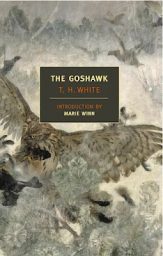 Fantasy (Silver Key): The author of a blog I follow mentioned in an off-hand way the life-affirming power in this obscure title by T.H. White. Prior to that I had never heard of The Goshawk (1951). But I love The Once and Future King, so with nothing more to go on than this sleight recommendation I purchased and read it over the last few days. And found it to be a wonderful little book.
Fantasy (Silver Key): The author of a blog I follow mentioned in an off-hand way the life-affirming power in this obscure title by T.H. White. Prior to that I had never heard of The Goshawk (1951). But I love The Once and Future King, so with nothing more to go on than this sleight recommendation I purchased and read it over the last few days. And found it to be a wonderful little book.
Pulp (Pulp Super-Fan): Morgan Holmes discusses Robert E. Howard and Fiction House publishers.
D&D (Grognardia): Believe it or not, I’ve never done a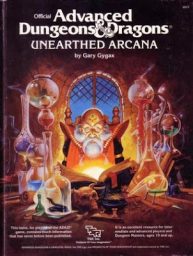 formal Retrospective of 1985’s Unearthed Arcana. Like me, you might have thought I’d done so, but what you’re remembering is an early, rather hyperbolic post entitled “Why Unearthed Arcana Sucked.” Since I’m already in the midst of writing several posts that revisit topics I’ve covered before on this blog, I thought it might be worthwhile to begin by tackling UA, since it’s an important book for both the history of AD&D and for the OSR.
formal Retrospective of 1985’s Unearthed Arcana. Like me, you might have thought I’d done so, but what you’re remembering is an early, rather hyperbolic post entitled “Why Unearthed Arcana Sucked.” Since I’m already in the midst of writing several posts that revisit topics I’ve covered before on this blog, I thought it might be worthwhile to begin by tackling UA, since it’s an important book for both the history of AD&D and for the OSR.
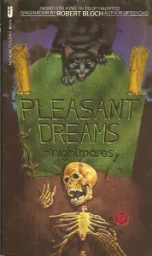 Horror (Adventures Fantastic): Today, in observance of the birthday of Robert Bloch (1917-1994), we’re going to look at a “collaboration” between Edgar Allan Poe and Robert Bloch, “The Lighthouse”..I put the word “collaboration” in quotes because what this really is, is a completion of a fragment Poe left unfinished. Not entirely unlike the “posthumous collaborations” of Derleth and Lovecraft, except that Bloch acknowledges he finished this story at the urging of the leading Poe scholar at the time.
Horror (Adventures Fantastic): Today, in observance of the birthday of Robert Bloch (1917-1994), we’re going to look at a “collaboration” between Edgar Allan Poe and Robert Bloch, “The Lighthouse”..I put the word “collaboration” in quotes because what this really is, is a completion of a fragment Poe left unfinished. Not entirely unlike the “posthumous collaborations” of Derleth and Lovecraft, except that Bloch acknowledges he finished this story at the urging of the leading Poe scholar at the time.
D&D (The Other Side): Blue Flame, Tiny Stars, or more properly, “Blue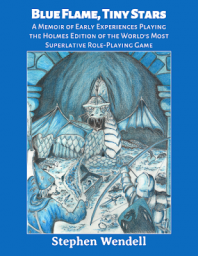 Flame, Tiny Stars: A Memoir of Early Experiences Playing the Holmes Edition of the World’s Most Superlative Role-Playing Game” by Stephen Wendell, is a memoir of one man’s first experiences with Dungeons & Dragons. Stephen’s story here is a familiar one. I could have recounted a very similar tale of the summer of 1980 after being exposed to D&D back in December of 1979. But his tale is an earnest one and an engaging one.
Flame, Tiny Stars: A Memoir of Early Experiences Playing the Holmes Edition of the World’s Most Superlative Role-Playing Game” by Stephen Wendell, is a memoir of one man’s first experiences with Dungeons & Dragons. Stephen’s story here is a familiar one. I could have recounted a very similar tale of the summer of 1980 after being exposed to D&D back in December of 1979. But his tale is an earnest one and an engaging one.
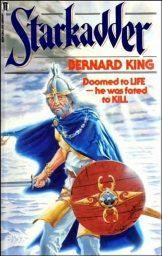 Fantasy (DMR Books): Starkadder is a man thrice cursed. Born with giant’s blood coursing in his veins, Starkadder is destined to be a warrior of great renown. Odin foresees his potential and gifts him with three lifetimes. Thor, seeking redress from a transgression of Starkad, Starkadder’s maternal grandsire, deigns that each of the three lives will end in betrayal.
Fantasy (DMR Books): Starkadder is a man thrice cursed. Born with giant’s blood coursing in his veins, Starkadder is destined to be a warrior of great renown. Odin foresees his potential and gifts him with three lifetimes. Thor, seeking redress from a transgression of Starkad, Starkadder’s maternal grandsire, deigns that each of the three lives will end in betrayal.
Pulp (Dark Worlds Quarterly): 1921 began with the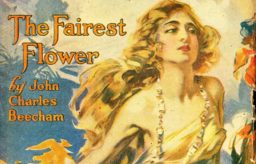 same pattern as the previous year, with small stories getting illustrations while the big ones got covers only. Because of this, Tarzan the Terrible had to wait for book publication to get images. The same is true of The Blind Spot by Homer Eon Flint and Austin Hall. The policy changed by October so ERB’s The Efficiency Expert has pictures!
same pattern as the previous year, with small stories getting illustrations while the big ones got covers only. Because of this, Tarzan the Terrible had to wait for book publication to get images. The same is true of The Blind Spot by Homer Eon Flint and Austin Hall. The policy changed by October so ERB’s The Efficiency Expert has pictures!
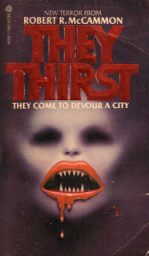 Horror (Glorious Trash): Robert McCammon was a name I knew well in my horror-reading teen years; you’d often see copies of his super-fat paperbacks in middle school and high school. I was a Stephen King guy, though, and rarely ventured outside his world to other horror fiction. I do recall attempting to read McCammon’s Swan Song at some point in high school – yet another super-fat paperback, this one about the end of the world – but I couldn’t get over how similar it was to King’s The Stand (which I’d read in its recently-published uncut version shortly before), so I put it aside.
Horror (Glorious Trash): Robert McCammon was a name I knew well in my horror-reading teen years; you’d often see copies of his super-fat paperbacks in middle school and high school. I was a Stephen King guy, though, and rarely ventured outside his world to other horror fiction. I do recall attempting to read McCammon’s Swan Song at some point in high school – yet another super-fat paperback, this one about the end of the world – but I couldn’t get over how similar it was to King’s The Stand (which I’d read in its recently-published uncut version shortly before), so I put it aside.
Poetry (Zaklog the Great): A performance of Lin Carter’s poem “The Death Song of Conan the Cimmerian”.
Horror (Too Much Horror Fiction): Valancourt Bookshas announced the 2023 release of two more titles in their long-running series of paperback horror featured in my and Grady Hendrix’s Paperbacks from Hell. This time it’s two 1980s novels by the esteemed Thomas Tessier: we’ve got Finishing Touches (1986) and Rapture (1987), major works of psychosexual horror. Tessier is no pulpy schlockmeister: his style is chilling, literate, and assured. Those of you appreciate the more, ahem, refined stylings of, say, Peter Straub or T.E.D. Klein or Dennis Etchison, will find these titles to your liking.
2023 release of two more titles in their long-running series of paperback horror featured in my and Grady Hendrix’s Paperbacks from Hell. This time it’s two 1980s novels by the esteemed Thomas Tessier: we’ve got Finishing Touches (1986) and Rapture (1987), major works of psychosexual horror. Tessier is no pulpy schlockmeister: his style is chilling, literate, and assured. Those of you appreciate the more, ahem, refined stylings of, say, Peter Straub or T.E.D. Klein or Dennis Etchison, will find these titles to your liking.
Reviews (Monster Hunter Nation): And I’ve written 2-3 books a year for the last decade consistently, and plan on continuing to do so for the foreseeable future, so get off my fucking back, you entitled little sh*t. Mew mew mew, he’s DRAGGING THINGS OUT. Listen here, f*ckface, I’ve written this entire series and like a dozen other books since the last time Martin or Rothfuss got off their fat ass and bothered to publish.
Games (The One Ring ): Feast your eyes on the new gameplay trailer for the free-to-play mobile game The Lord of the Rings: Heroes of Middle-earth – coming May 10th. EA and Capital Games, experts in RPG mobile gaming based on beloved franchises, announced the upcoming launch date for The Lord of the Rings: Heroes of Middle-earth, releasing a new gameplay trailer in celebration of the news.
Science Fiction (Tor): Snow Crash. It wasn’t his first book, but it was the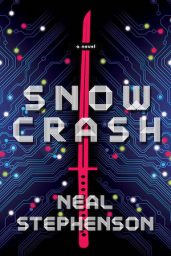 one that put him on the map, and not just within the science fiction community. The book was published in 1992, which means this past year marked its 30th anniversary. And the book was certainly attention-grabbing. With its hero bearing the improbable name of “Hiro Protagonist,” the story is a sprawling journey through a fractured and dis-United States, whose government has retreated into armed compounds, leaving law enforcement in the hands of private companies.
one that put him on the map, and not just within the science fiction community. The book was published in 1992, which means this past year marked its 30th anniversary. And the book was certainly attention-grabbing. With its hero bearing the improbable name of “Hiro Protagonist,” the story is a sprawling journey through a fractured and dis-United States, whose government has retreated into armed compounds, leaving law enforcement in the hands of private companies.
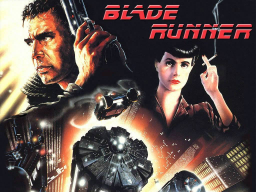 Cinema (Arkhaven Comics): Blade Runner is a film I hold in considerable affection and yet it is not a great movie. Some argue not even a good movie, but they’re wrong and they’re bad, and here’s why. It is an extraordinarily influential film. Everyone knows that it has problems. It’s just that it’s hard for anyone to agree on what they are. The trouble is that each of the major cuts is an obvious failure, each in its own special way.
Cinema (Arkhaven Comics): Blade Runner is a film I hold in considerable affection and yet it is not a great movie. Some argue not even a good movie, but they’re wrong and they’re bad, and here’s why. It is an extraordinarily influential film. Everyone knows that it has problems. It’s just that it’s hard for anyone to agree on what they are. The trouble is that each of the major cuts is an obvious failure, each in its own special way.
Fantasy (Classics of Science Fiction): I am reading The King of Elfland’s Daughter by Lord Dunsany, first published in 1924. Normally, I do not like reading fantasy, but Bookpilled praised this novel so extensively and claimed it was so influential that I had to try it. I’ll review the book itself in the future. What I’m writing about now is how I tried to visualize the story using AI software.
Daughter by Lord Dunsany, first published in 1924. Normally, I do not like reading fantasy, but Bookpilled praised this novel so extensively and claimed it was so influential that I had to try it. I’ll review the book itself in the future. What I’m writing about now is how I tried to visualize the story using AI software.
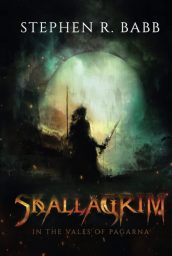 Authors (DMR Books): I’ve also written for magazines, the most noteworthy of which was Stratos in the mid-90s and early 2000s. I was a featured columnist under two pen names and did travel pieces and reviews.
Authors (DMR Books): I’ve also written for magazines, the most noteworthy of which was Stratos in the mid-90s and early 2000s. I was a featured columnist under two pen names and did travel pieces and reviews.
Tolkien (Notion Club Papers): The most important evaluation of the 1981 BBC Radio Lord of the Rings is that I have listened to it many times – most recently over the past few weeks. There is a lot to enjoy, and that enjoyment is enhanced by repeated listening; and some aspects are absolutely excellent.
Pulp (Pulp Super-Fan): On Black Friday weekend 2022, Steeger Books put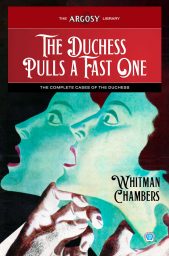 out their next sets of Argosy Library volumes, Series XII and XIII. As always, in each series, we get 10 books of great, and sometimes overlooked, fiction that appeared in the early pulps. We get some stand-alone works, as well as volumes of various sub-series. This selection seems very heavy on crime and detective stories and series.
out their next sets of Argosy Library volumes, Series XII and XIII. As always, in each series, we get 10 books of great, and sometimes overlooked, fiction that appeared in the early pulps. We get some stand-alone works, as well as volumes of various sub-series. This selection seems very heavy on crime and detective stories and series.
Pulp (Pulp Flakes): Who sees your manuscript and how do they decide if its suitable for publication? In 1932, Author and Journalist conducted a survey of editors at Street & Smith, Munsey, Doubleday, Black Mask, Ranch Romances and even the often overlooked Dell and Fawcett groups to find out.
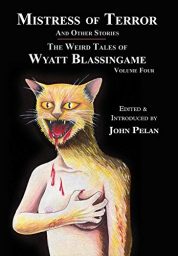 Fiction (Fantasy Literature): By the time a reader gets to the fourth and final volume in Ramble House’s series of books dedicated to Wyatt Blassingame, he/she will almost inevitably have come to the realization that the Alabama-born author surely was a master of that peculiar horror subgenre known as “weird-menace” fiction. And indeed, those first three volumes
Fiction (Fantasy Literature): By the time a reader gets to the fourth and final volume in Ramble House’s series of books dedicated to Wyatt Blassingame, he/she will almost inevitably have come to the realization that the Alabama-born author surely was a master of that peculiar horror subgenre known as “weird-menace” fiction. And indeed, those first three volumes
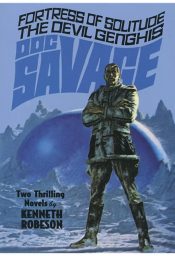 Writing (The Obelisk): Doc Savage and adventure pulp writer Lester Dent is known for his fiction formulas. Whether waving those character identification tags or the much beloved Master Formula for plots, Dent’s advice has helped many writers in the seventy years since he shared it with the writing world. But these formulas are not the whole of Dent’s advice.
Writing (The Obelisk): Doc Savage and adventure pulp writer Lester Dent is known for his fiction formulas. Whether waving those character identification tags or the much beloved Master Formula for plots, Dent’s advice has helped many writers in the seventy years since he shared it with the writing world. But these formulas are not the whole of Dent’s advice.
Men’s Magazines (Glorious Trash): The seventh installment of Men’s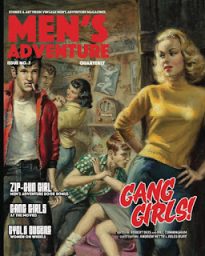 Adventure Quarterly was perfectly timed for me; its focus on “Gang Girls” was in-line with a CD I purchased shortly before Xmas (more on which anon), so I dove right into this latest issue of the series. And it’s another great publication courtesy Bob Deis and Bill Cunningham, providing ample stories and art. We also get informative editorials from the two and co-editors Jules Burt and Andrew Nette; the latter gives a cool rundown on ‘50s juvenile delinquent pulp, particularly focused on the novel that kicked the genre off, The Amboy Dukes.
Adventure Quarterly was perfectly timed for me; its focus on “Gang Girls” was in-line with a CD I purchased shortly before Xmas (more on which anon), so I dove right into this latest issue of the series. And it’s another great publication courtesy Bob Deis and Bill Cunningham, providing ample stories and art. We also get informative editorials from the two and co-editors Jules Burt and Andrew Nette; the latter gives a cool rundown on ‘50s juvenile delinquent pulp, particularly focused on the novel that kicked the genre off, The Amboy Dukes.
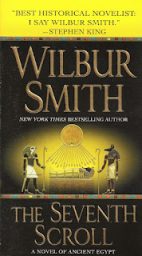 Fiction (Chimney Sweep Reader): “The Seventh Scroll”, by Wilbur Smith is the follow-up to “River God”, one of the best historical novels I have read in a very long time. “The Seventh Scroll” was meant to be read after “River God” but it is not exactly a sequel. It actually takes place in the present day with a couple of archeologist types who are out to discover the hidden tombs that were depicted in the first book. What an intriguing concept! What we got to live through before is now seen through the eyes of history, including all the distortions of history that are bound to happen. After all, what we assume to be true through archeological research isn’t necessarily the way it really happened.
Fiction (Chimney Sweep Reader): “The Seventh Scroll”, by Wilbur Smith is the follow-up to “River God”, one of the best historical novels I have read in a very long time. “The Seventh Scroll” was meant to be read after “River God” but it is not exactly a sequel. It actually takes place in the present day with a couple of archeologist types who are out to discover the hidden tombs that were depicted in the first book. What an intriguing concept! What we got to live through before is now seen through the eyes of history, including all the distortions of history that are bound to happen. After all, what we assume to be true through archeological research isn’t necessarily the way it really happened.
Biography (M C Tuggle): Everybody will get a kick out of this book. Those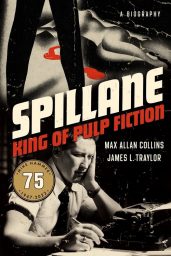 who are not fans of Mickey Spillane will discover a life story so vigorous and well-lived that most will not only enjoy the read but will convert to Mickey Spillane fandom. And we lucky souls who are already fans will have a fresh appreciation of the artistry, sheer energy, and creativity of one of the best-selling authors of all time.
who are not fans of Mickey Spillane will discover a life story so vigorous and well-lived that most will not only enjoy the read but will convert to Mickey Spillane fandom. And we lucky souls who are already fans will have a fresh appreciation of the artistry, sheer energy, and creativity of one of the best-selling authors of all time.
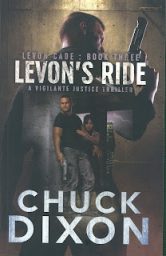 Fiction (Pulp Fiction Reviews): We are big fans of this series about an ex-marine widow, single father, trying his best to get by in a world filled with criminals, organized gangsters, corrupt politicians and perverts praying on the young and innocent. That the so-called “civilized” world Cade came home to after his campaigns in the Middle East. Not exactly the Norman Rockwell America we all once valued.
Fiction (Pulp Fiction Reviews): We are big fans of this series about an ex-marine widow, single father, trying his best to get by in a world filled with criminals, organized gangsters, corrupt politicians and perverts praying on the young and innocent. That the so-called “civilized” world Cade came home to after his campaigns in the Middle East. Not exactly the Norman Rockwell America we all once valued.
Cinema (Frontier Partisans): I know what you’re thinking: What the world needs is a violent action thriller featuring a Texas Ranger forced to work with British Intelligence to capture an Irish terrorist fugitive. We’re in luck. That tale done got spun. A trailer has dropped for One Ranger. From Deadline:
needs is a violent action thriller featuring a Texas Ranger forced to work with British Intelligence to capture an Irish terrorist fugitive. We’re in luck. That tale done got spun. A trailer has dropped for One Ranger. From Deadline:
History (Isegoria): William Dalrymple titled his book The Anarchy, because India was torn apart just as the East India Company started to grow: On 21 May, Nader Shah with a force of 80,000 fighting men crossed the border into the Mughal Empire, heading for the summer capital of Kabul, so beginning the first invasion of India for two centuries.
History (Marzaat): Researching my post for Robert W. Chambers’ The Dark Star, I wanted to know, though it’s not germane to that novel, when the Ottomans decided on the Armenian Genocide. I asked an academic acquaintance who specializes in genocide studies for some suggested reading, and he pointed me to McCarthy’s work.
Cinema (DMR Books): Charlton Hestondied on this date back in 2008. Heston was and is an authentic Hollywood legend. However, when news of his demise hit, I was initially kind of ‘whatever’ about it. Heston had suffered so many slings and arrows from the press during the final years of his life that I had—as intended—come to view him as sort of a cheesy has-been. The fact that I hadn’t seen a Heston flick in over a decade probably helped as well.
Great stuff here!